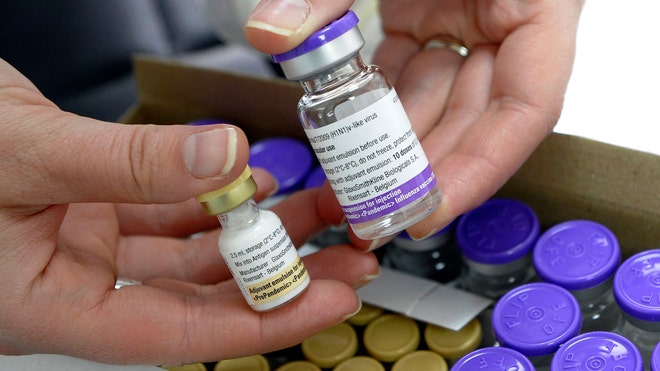
It was supposed to be a simple vaccine against swine flu, but since she had it, Chloe Glasson’s life has been like a bad dream.
Just four months after being given the Pandemrix injection, the 15-year-old schoolgirl developed the sleeping disorder narcolepsy.
Now, without warning, she falls asleep up to 30 times a day wherever she is.
Naturally, this has made her life at school challenging, as she often drops off in class. But it is also potentially dangerous.
Chloe recently went missing for two hours after going into a ‘dream-like autopilot’ state while making a short journey to her grandmother’s house. She eventually found her own way home safely, but not before her terrified family had contacted police, amid fears of what might have happened to her.
Now she is hoping a pioneering treatment will help her to establish a more normal sleeping pattern.
She is to receive the specialist drug sodium oxybate – at a cost of £13,000 a year – at the Royal Hospital for Sick Children in Edinburgh.
Chloe said: ‘I am putting a lot of faith in the treatment.
‘While the tablets won’t cure me, they may offer the chance of a more normal life.’
Vaccinated with Pandemrix in November 2009 during a flu pandemic, she is one of at least 100 people estimated to have developed narcolepsy afterwards.
Studies have found a ten-fold increase in the risk of developing the disorder after the jab.
Chloe’s mother Rebecca, from Dysart, Fife, said: ‘Her life has been devastated after we followed government advice to have her immunised against the threat of swine flu.
‘She has gone from being a bright, outgoing girl to one who cannot go out on her own. She doesn’t doze for more than a couple of hours at a time, but she can have disturbing dreams.
‘We desperately hope this new treatment will help.’
The Government revealed in September that it would pay damages to some of those who developed problems after being given the Pandemrix vaccine before August 31, 2010.
Chloe’s family hope she will receive the maximum compensation of £120,000.
The Medicines and Healthcare Products Regulatory Agency dropped the vaccine from its flu campaign in 2011.
Matt O’Neill, of the charity Narcolepsy UK, said: ‘We believe that more than 100 people have developed narcolepsy because of the swine flu vaccine.’ He added that families affected would meet to discuss the issue at the charity’s conference in Birmingham this month.
GlaxoSmithKline, which makes Pandemrix, said: ‘Patient safety is our number one priority and we are researching how narcolepsy is triggered and how this vaccine might have interacted with other risk factors in affected individuals. We hope ongoing research efforts will enable us to provide more answers.’
Narcolepsy is typically caused by the loss of neurons that produce a hormone that keeps people awake.
Source: Daily mail


 A new study suggests that getting treatment for a common sleep problem may do more than help you sleep better – it may help you look better over the long term, too.
A new study suggests that getting treatment for a common sleep problem may do more than help you sleep better – it may help you look better over the long term, too.